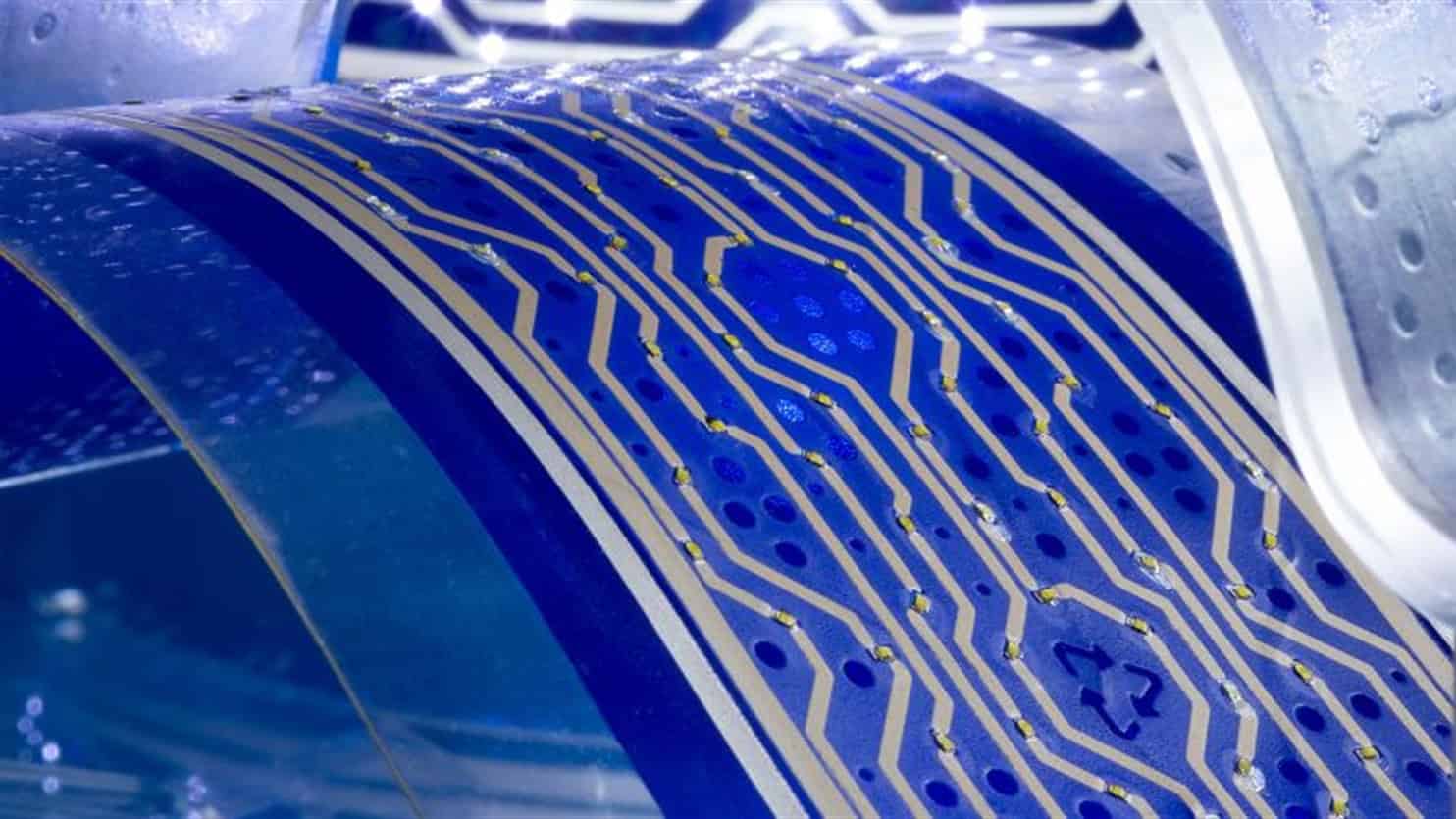
Polyamide is produced from crude oil, which is a non-renewable raw material. This is why it is not an entirely obvious choice to use these fibers for such a short-lived product like clothing. When clothes made with polyamide are discarded after people are finished wearing them, they mainly end up polluting the environment. At the same time, however, polyamide cannot simply be dispensed with because it does make textiles more durable and stretchier. For example, conventional women’s stockings and carpets are made almost entirely out of polyamide. When it comes to hats or uniforms, polyamide is usually blended with wool or cotton because this increases their level of comfort when wearing them. Up until now, attempts to recycle clothing have failed because of these blended fibers.
This is all the more problematic since the quantities of clothing that contain polyamide are enormous. Taking into account a typical blend of 15 to 20%, the production volume worldwide was 10.8 million metric tons in 2018.
“If we can recover just a part of this as raw material for new fibers, we will already be making a major contribution to the environment,” says Dr. Tung Pham, head of the Research Institute for Textile Chemistry and Textile Physics based in Innsbruck, Austria.
Together with his team, he has developed a new method for recycling clothing that contains polyamide fibers. He explains this process in an interview with Innovation Origins:
How far advanced is the technology for recycling clothing made with synthetic fibers at present?
“You cannot just separate out a textile fiber that contains polyamide in a mechanical process. Although that is possible with plastic. So, there are already several successful recycling technologies for that. Such as the ones for separating polyethylene terephthalate (PET) and polyethylene (PE) from bottles. Even clothing fabrics made from recycled polyethylene terephthalate that is extracted from plastic bottles are available nowadays. All the same, there isn’t a system with a fully circular system so far.”

What problems are there for recycling clothing made with polyamide fibers?
“The fibers are usually already spun into the yarn and this blended yarn is difficult to separate with mechanical methods. Previous attempts have so far been unsuccessful. Fibers were heavily damaged during the recycling process and were too short to be spun again.”
“In addition, solvents can also destroy the fibers during the recycling process. For instance, in chemical recycling methods, blended fibers dissolve in supercritical mediums and even in supercritical water and can no longer be separated. “(NB: Supercritical water has significantly different properties than water under standard conditions. It has the density of normal water and the viscosity of water vapor).
Also interesting: Recycling textiles – even if the natural fibers are mixed with plastics
“In theory, an organic solvent such as formic acid or cresol could also be used to dissolve the polyamide. However, the processing technology is considered less advantageous because it requires vast amounts of solvent. This is questionable from a technical and ecological perspective and is consequently not used. This means that a process for separating wool, cotton, rayon, and elastane from polyamide has not yet been found. It is possible to separate polyamide from other fibers, but as soon as a blended yarn is present, we reach the limits of what is feasible.”
What approach do you use?
“Mechanical separation is therefore out of the question as far as we are concerned. In our method, only the polyamide is dissolved and the wool can easily be separated back into wool fibers. This results in just a minimal reduction of the fiber length. Our approach is to unravel the surrounding structure of wool or cotton by dissolving the polyamide. This improves our chances of being able to separate the loose wool or cotton without causing hardly any damage.”
How can we visualize this?
“For example, we add a blended yarn of wool or cotton containing polyamide to this solution, which at the moment is made up of water, ethanol, and calcium chloride. After a short time, we have two separate portions: The solid portion is the wool, which we rinse out of the solution with water and separate from the rest of it. The liquid portion, which contains the dissolved polyamide fibers, can also be separated by adding some water. The polyamide sinks to the bottom when this water is added and we can filter it out and reuse it. But as a powder and not as a fiber. This powder can be spun into new polyamide fibers by a fiber spinning machine.”
How did you come up with the solvent?
“This chemical mechanism was already documented in the 1960s when it was used to separate out silk. We have applied the chemistry to polyamide. In that process, we were able to figure out the ratio between calcium chloride, ethanol, and water in the mixture that enables us to selectively dissolve polyamide without damaging cotton, wool, rayon, or elastane.”
Also interesting: Truly sustainable cotton that is water repellent, fluorescent and super magnetic
“Polyamide can be seen as a polymer that is made up of very long chains. The interaction between the polymer chains is enhanced by what are known as hydrogen bonds. With our mixture, we are able to break down these hydrogen bonds and reduce the forces of attraction between the polymer chains. This is how we are able to dissolve polyamide without the use of toxic organic solvents.”
How far has the process advanced?
“At the moment, we are still working on a laboratory scale, but we would like to advance to a pilot scale within the next four years. We have just submitted an application to join a European consortium – with partners from industry and research institutes. Within this consortium, we intend to collaborate with companies from the fields of textile collection, plastic recycling, life cycle analysis, fiber spinning, and textile manufacturing.”
“We also want to assess the value chain in order to be able to promote textile circularity. On a pilot scale, we will extract materials from blended textiles on a scale of 100 kilograms, spin new fibers from this and work together with textile manufacturers to create prototypes from recycled wool, cotton, and polyamide. In addition, we also want to bring about systemic changes and promote public acceptance of reusable products. However, we will only succeed in doing this if there is a legal framework in place.”

(c) Unsplash – Janko Ferlic
How and where could this method for recycling clothing that you have developed be implemented?
“If companies take back their used products from end consumers, that will be a good thing. One example of this is the cradle-to-cradle principle that the pantyhose manufacturer Wolford uses. It manages its product cycle by motivating customers to return products after they have finished wearing them. However, we are only managing to address part of the value that we have in textile manufacture by doing that. A larger proportion is handled by textile collection companies such as Caritas. We also want to implement our method in recycling companies to enable the recycling of clothing regardless of the manufacturer.”
Thank you for this interview.
Also interesting: Mechanized recycling – from pants to car seats







